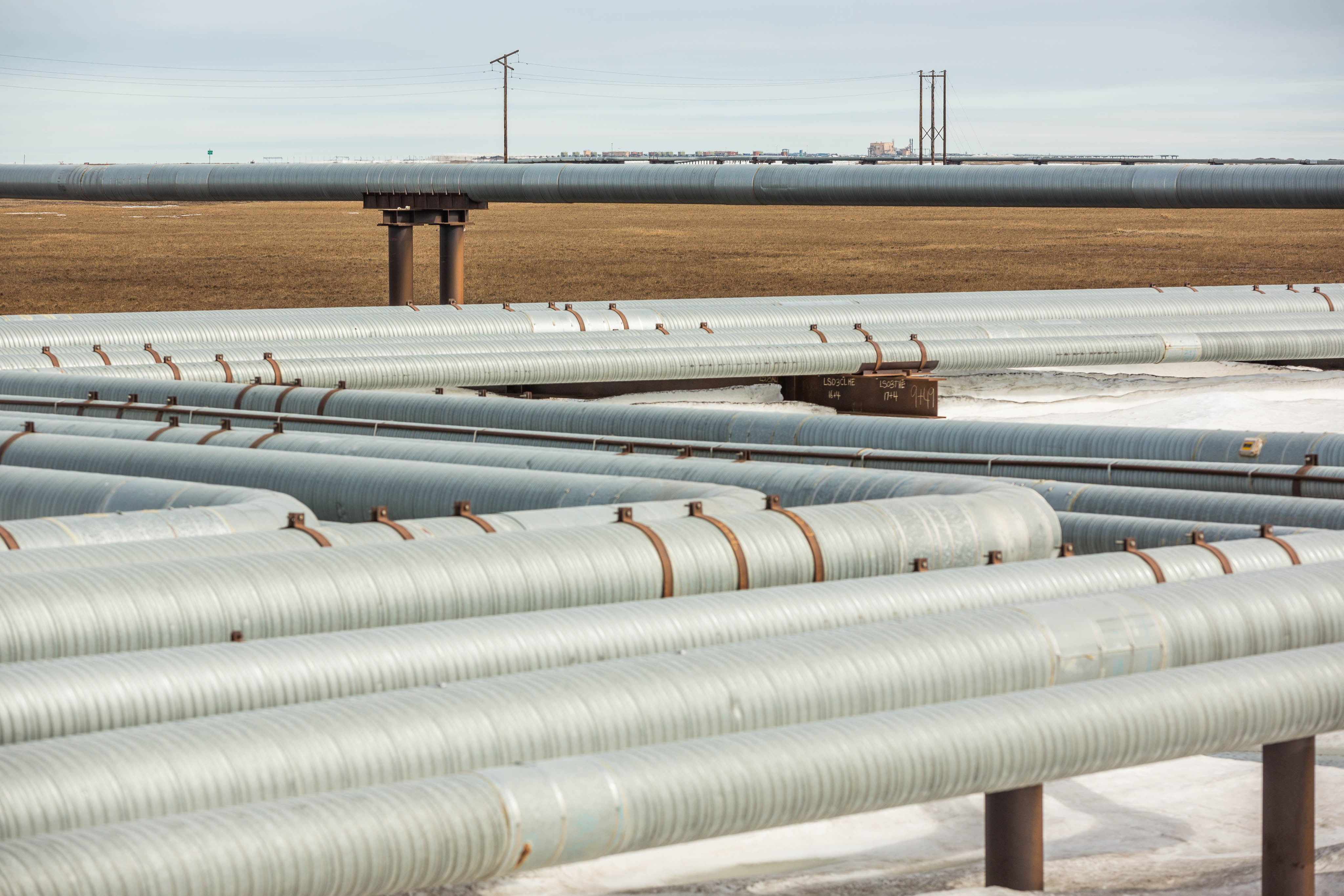Prudhoe Bay spill in April leads to wider review, suspension of 14 wells

BP has shut in 14 wells at the Prudhoe Bay field to prevent a replay of the oil and gas release on April 14 that the company now believes was caused by a “mechanical failure” after permafrost, melted from hot production fluids, caused the ground to sink and put extra pressure on the well.
Five of those wells had been producing oil at the time of the spill but are currently not doing so because their operations were suspended, said Dawn Patience, a BP spokeswoman.
The leak in April occurred when the wellhead and valve assembly of one of Prudhoe Bay’s original wells suddenly jacked up 3 feet and struck the roof of a well house, causing damage to equipment that led to the uncontrolled release of oil and gas.
Additional details about the incident and BP’s plans to address the problem emerged in a June 27 report from BP to the Alaska Oil and Gas Conservation Commission. The agency said in a statement that it agrees with BP’s conclusion and plan. Another nine wells are also being reviewed.
A key element of the plan is a risk assessment of the potential for similar problems at the 14 “highest risk” wells with similar designs that have already been shut in.
The 23 wells are a fraction of the roughly 1,700 wells at the Prudhoe Bay Unit. The remainder have a different design and are not expected to face similar problems. About 675 wells produce oil at Prudhoe Bay, accounting for close to half the state’s 2017 production of about 550,000 barrels of oil daily.
“There was no production impact” to overall Prudhoe Bay production from the suspension of the producing wells, Patience said.
The oil-and-gas release did not harm people or wildlife or damage tundra. The escaping gas caused a plume of crude oil to spray into a containment area of the gravel drilling pad, affecting less than 1½ acres, state regulators said.
The incident caused leaking from two spots on the well. The leaking was stopped April 17, three days after the incident began. Boots and Coots, a Halliburton-owned well-control company based in Texas, killed the well by pumping a solution of methanol and saltwater into it.
BP’s report estimates that 63 gallons of crude were released, along with nearly 100,000 pounds of natural gas.
The consequences could have been far worse, and the incident raises questions about whether other North Slope wells outside of Prudhoe Bay might face similar problems, said Lois Epstein, Arctic program director for The Wilderness Society.
“They are still conducting testing, but they are planning to plug and abandon this well, which means it’s serious,” Epstein said.
The troublesome well was drilled by Arco Alaska in 1970, a couple years after the Prudhoe Bay discovery, but was not placed into production until 1977, when the trans-Alaska oil pipeline was finished. The wellhead and valve assembly, known as a Christmas tree for its rough resemblance to a decorated tree, moved 3 inches during a 2003 pressure test. Well production was also suspended for two years in 2014 when a leak was identified in cavities in the wellhead, also during a pressure test.
The report found that “hot produced reservoir fluids caused the permafrost zone to melt non-uniformly near the well.” That caused subsidence that created a “high enough downward load” on the well to account for “failure below the wellhead.” The failure led to release of energy in the well, lifting the wellhead and valve assembly.
BP took steps to evaluate similarly designed wells shortly after the leak was discovered, Patience said. That led to the shut-in of the 14 wells, using mechanical plugs. Those wells, including the five wells that had been in production, remain shut-in, Patience said Monday.
“BP is committed to operating Prudhoe Bay in a safe, reliable and compliant manner,” Patience said.
The Alaska Oil and Gas Conservation Commission is not investigating the incident and BP is not facing penalties, according to a statement emailed by Samantha Carlisle, with AOGCC.
“BP has completed its investigation,” the statement said. “They have shared the results with AOGCC, and AOGCC agrees with their conclusions and forward plans.”
BP said it plans to permanently plug and abandon the well that leaked — a process that includes cementing the well shut and removing the wellhead — by the end of the year.
As part of its plan, BP will develop a program to track ground subsidence and predict future problems to avoid them. The company also plans to report back to AOGCC with an update by Oct. 31.